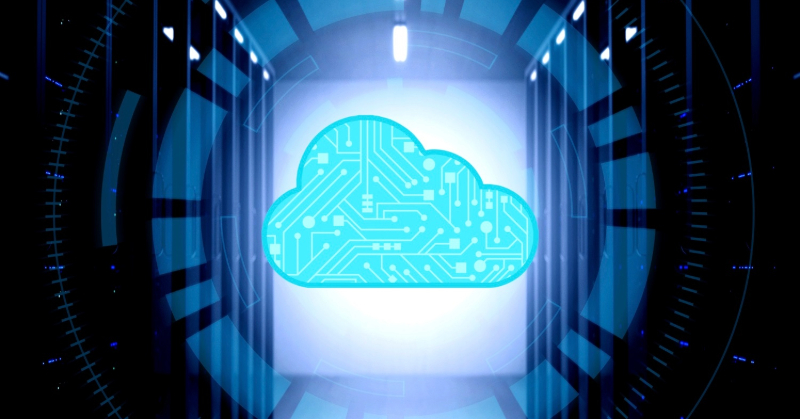In today’s rapidly evolving digital landscape, Cloud Computing 2.0 has emerged as a transformative force, revolutionizing the way businesses operate and accelerating their digital transformation journeys. This cover story delves into the intricacies of Cloud Computing 2.0, exploring its impact on technology landscapes across industries and shedding light on the next phase of innovation and transformation
Amit Singh
Operating with caution is the way to do business in 2023. Leaders are more mindful of their expenses, given the economic uncertainties. Organizations wonder if it is possible to increase ROI and maintain low IT infrastructure and storage costs while enabling agility and automation.
The cloud presents a transformative solution for organizations. According to a report from McKinsey, leveraging the cloud allows companies to shift their IT spending from a capital expenditure (capex) model to an operational expenditure (opex) model, resulting in an overall cost reduction of up to 60 percent. As the Indian government pushes forward with digital initiatives, the projected digital transformation (DX) spending in India is expected to reach $85 million by 2026, with cloud computing, particularly Cloud 2.0, positioned at the core of this transformation.
Cloud 1.0 to 2.0
Cloud computing has come a long way since its inception, evolving from a novel concept to a critical component of modern business operations. Many recent cloud investments were made in a rush during the onset of the Covid pandemic to cater to remote working or a short-sighted goal of cost savings.
However, the current global economic landscape necessitates a reevaluation of cloud strategies, placing emphasis on the true value derived from these investments. Businesses are now seeking to fine-tune their cloud-value evaluation models and explore avenues to support customers and diversify revenue sources. This paradigm shift highlights the cloud as a fundamental pillar of modern business strategy, playing a vital role in driving growth, transformation, and continuous innovation.
Cloud 2.0 represents the next generation of cloud computing, offering a more advanced, sophisticated, and secure platform that fuels innovation and supports organizations in their digital transformation (DX) strategies.
The introduction of Cloud Computing 2.0 marks an era of unparalleled innovation and transformation. The true transformative power of the cloud is being realized today as it enters a higher stage of evolution, propelled by artificial intelligence (AI), machine learning (ML), edge computing, quantum computing, and other next-generation advancements. This on-demand innovation capability presents exponential growth potential.
Bhawna Agarwal, Country Head – Strategy and Growth, HPE India, provides her perspective, stating, “The role of the cloud has evolved from future-proofing technology to future-proofing businesses. Cloud Computing 2.0 delivers a unified, cloud experience for customers’ data and workloads, enabling them to consume IT as-a-service.”
Cloud Computing 2.0 builds upon the foundation established by its predecessor, addressing previous limitations and challenges. It harnesses advanced technologies like edge computing, serverless computing, and AI integration to drive innovation and enable businesses to achieve their digital objectives.
“With Cloud 2.0, organizations can now perform data analysis, apply artificial intelligence, and develop advanced applications in the cloud. This evolution has elevated cloud computing’s significance, making it essential for critical applications, data analysis, decision-making, and AI integration,” explains Deepak Pargaonkar, Vice President of Solution Engineering, Salesforce.
Srinivasa Raghavan, Product Manager, ManageEngine, adds, “The cloud has become the standard platform for all business operations. AI, low-code, Function as a Service, and serverless platforms have revolutionized the playing field, enabling non-tech-savvy individuals to achieve business objectives like never before.”
Time to market with serverless computing
The longer companies take to update their technology, the more difficult and expensive the final change will be. As a result, outdated digital technology solutions make it difficult to adapt business capabilities to market demands.
Businesses can expedite their code to production rates with serverless cloud computing (cloud 2.0). For instance, if an electric vehicle (EV) manufacturer wants to incorporate additional capabilities into its vehicular operating system, deploying it through the cloud simplifies the process.
Cloud 2.0 takes this efficiency to the next level. Its serverless architecture allows organizations to focus entirely on developing value-added functions and features. According to McKinsey, this capability enables organizations to test innovations and respond to client demands 20-40% faster.
In traditional cloud environments, users log into virtual servers, whereas in serverless computing, the entire functional application programming interface (API) runs without the need for server management. This serverless setup empowers businesses to prioritize the development of value-added functions and features.
Industries like media and entertainment, with data and graphic-intensive workloads, often require high-performance computing power, which typically involves significant investments in specialized hardware infrastructure. “The next generation of the cloud leverages its computing prowess to deliver high performance for these workloads on a subscription model,” adds Dr. Sayed Peerzade, EVP & Chief Cloud Officer, Yotta. He further explains that this approach relieves IT teams of infrastructure management concerns and allows them to focus on programming, while organizations can benefit from cost savings, scalability enhancements, and increased agility.
Serverless architecture offers two key advantages. Firstly, it follows a pay-as-you-go strategy throughout the entire technology stack, allowing for cost reduction at the most granular level possible. The pay-as-you-go approach ensures that functionalities are placed into production via the serverless ecosystem operator only when they are needed.
Secondly, serverless architecture provides ecosystem access to both the underlying infrastructure and the full functionality, significantly reducing the cost of transforming a company’s IT environment.
By embracing Cloud 2.0 and leveraging the power of serverless computing, businesses can unlock new levels of efficiency, agility, and cost savings. The ability to rapidly develop and deploy value-added functions empowers organizations to stay ahead in an ever-evolving digital landscape.
Improved app performance with edge computing
One of the crucial aspects of Cloud Computing 2.0 is its emphasis on the Edge, which entails processing data closer to the source. This approach helps decrease latency and enhance application performance, especially for real-time data processing requirements.
“Furthermore, the increasing adoption of emerging technologies is driving the need to seamlessly deliver services in real-time, fueling the growth of next-generation cloud computing. Various sectors such as manufacturing, OTT, gaming, healthcare, and retail are witnessing a growing uptake of edge computing,” explains Dr. Sayed.
By bringing computation and storage closer to data sources, businesses can improve their response times and save bandwidth. Simultaneously, advancements in the edge cloud are expanding the application possibilities for businesses, encompassing in-store and on-site operations, as well as sustainability solutions.
In these scenarios, data processing occurs at the location where the action is happening, such as a production line or an offshore wind farm, rather than at a central command point. In a cloud environment, IoT networks combine with digital twins (virtual avatars of physical environments that act based on real-time data) and artificial intelligence, driving a new era of agile innovation.
Illustrating with an example, Srinivaschary T, Lead – Solution Architect at Dell Technologies India, says, “Recommendation engines for streaming services, or for enhancing the experience of cloud gaming and other visual workloads, are experiencing significant growth. These recommendation engines and visual analytics, crucial for delivering an improved customer experience, are now hosted on micro data centers located at the edge of the cloud.”
Cloud 2.0-enabled DX strategies minimize the risk of overwhelming cloud networks, resulting in longer response times. Edge computing empowers cloud-native applications, enhancing connectivity, scalability, security, personalization, and cost-effectiveness. In the case of EV manufacturers, coupling edge computing with the cloud also unlocks predictive maintenance capabilities. These capabilities can be implemented with the support of deep-tech vendors to reduce costs while ensuring quality.
[Source: https://itvarnews.techplusmedia.com/2023/06/16/cloud-computing-2-0-unleashing-innovation-and-transformation/]

















 Back
Back



